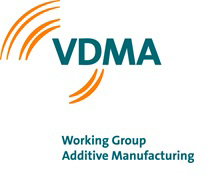
Sentiment in additive manufacturing remains positive despite tense economic situation
Frankfurt, 02 October 2019 – “The mood of our member companies is extremely positive”, reported Dr. Markus Heering, Managing Director of the Additive Manufacturing Working Group (AG AM) in the VDMA, today at the apron press conference for the leading trade fair for additive production technologies – formnext 2019 in Frankfurt (19 to 22 November 2019, Messe Frankfurt). According to a recent member survey, a good three-quarters of those surveyed expect positive business development in the next 24 months.
Despite the currently tense economic situation, optimism prevails when looking ahead to the next twelve months: around 60 percent of those surveyed expect a positive development. Another third do not fear any negative effects. “Only eight percent express negative expectations for next year. In the two-year outlook, this figure is only two percent,” Heering explained the results of the survey.
Mood from all areas of the value chain
A total of 90 responses from the 150 member companies were included in the evaluation. 22 percent of these responses came from users and service providers, 28 percent from machine manufacturers and 29 percent from members who indicated their affiliation with “Others”. These included research institutes, software and automation companies and suppliers of materials and consumables.
“All areas of the additive value chain are represented in comparable quantities in our survey,” explained Heering. A finer resolution of the answers shows that machine manufacturers in particular are optimistic. While 70 percent are positive about the next twelve months, answers almost balance out with positive (50 percent) and neutral (45 percent) expectations among users and service providers. In the fourth group, the ratio of positive to neutral answers is 65 to 25 percent. In contrast, the assessments of all four groups in the two-year forecast converge: The positive answers here range between 71 and 80 percent.
The answers of all four groups to the question of how their investments in the AM sector will develop in the coming twelve months are also comparable. Only 16 per cent of all respondents announced a reluctance to invest. In contrast, 84 percent want to at least maintain their current investment level; around 28 percent plan to expand. “These figures confirm that our industry is keeping an eye on its long-term objectives despite the current economic downturn: The industrialization of additive manufacturing processes,” explained Heering.
High level of investment – More and more series applications
According to Heering, in addition to the high level of investment, the increasing proportion of additively manufactured series components, spare parts and tools indicates that the industrialization of the AM industry is progressing. According to the survey, users, service providers and machine manufacturers account for barely a quarter of the use of additive components in prototypes. On the other hand, the use of additive tools accounts for 25 to 27 percent in these three business areas. The figure for spare parts is between 19 and 29 percent – and all three groups state that 24 to 27 percent of their additively manufactured components are series products.
“Additive manufacturing is becoming an industrial production process and has long since outgrown its origins in rapid prototyping,” said Heering in Frankfurt. In line with this, the respondents see process stability, costs and standardization as the most burning issues in their industry today. In view of rising sales of internally manufactured and externally purchased AM components, this focus is not surprising according to Heering. Background: Almost half of the users and service providers surveyed state that their internal AM production and external purchases are now in the six and seven-digit range.
About 150 companies and research institutes collaborate under the roof of the VDMA in the Additive Manufacturing Association. System manufacturers, suppliers of components and materials, industrial users from the metals and plastics sectors, services providers for software, manufacturing, and finishing as well as researchers all have a common goal: the industrialization of additive manufacturing technologies.